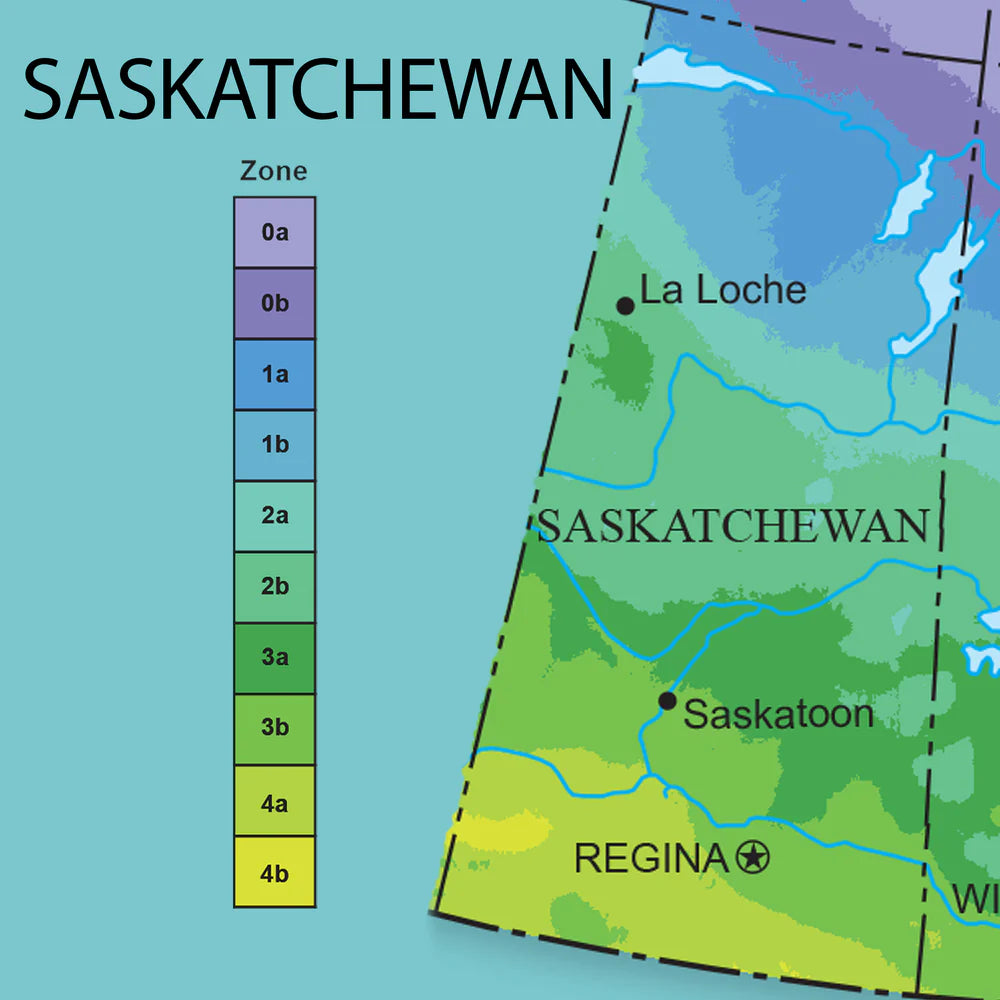Plant Selection & Zone Guide
Choosing the right plants for your yard is essential for a healthy, low-maintenance landscape. Our Plant Selection & Zone Guide helps you match species to your soil, sun exposure, and hardiness zone—so you’ll enjoy vibrant blooms, lush foliage, and fewer replacements over time.
Why Plant Selection Matters
Climate resilience:
Plants suited to your region require less water, fertilizer, and pest control
Seasonal interest:
A well-chosen palette provides color and texture from early spring through late fall
Ecosystem support:
Native and adapted species feed pollinators, birds, and beneficial insects
Cost efficiency:
Fewer winter losses and replacements mean long-term savings on plant purchases and maintenance
Understanding Hardiness Zones
USDA zones classify regions by their average minimum winter temperatures. In Saskatchewan, zones range from 0a (–60°F) to 3b (–35°F).
How to use this guide:
1. Locate your zone (image below)
*Saskatoon, Warman, Martensville, and the Rural Municipality of Corman Park are classified as zone "3b".*
2. Cross-reference with our recommended plant lists (below the image)
*Note: Make sure to consider micro-climates (e.g. south-facing walls) that may allow less hardy varieties.*

Plant Recommendations (Cross Reference with Above Image)
Trees:
‘Prairie Sky’ Poplar (Zone 2b–4),
Honeylocust ‘Shademaster’ (Zone 3b–8)
Prairie Fire Crabapple (Zone 3a–7)
Japanese Tree Lilac (Zone 3a–8)
Shrubs:
Dwarf Alberta Spruce (Zone 2a–6)
Blue Point Juniper (Zone 3a–8)
Common Lilac (Zone 3a–7)
Bush Cinquefoil (Zone 2a–7)
Perennials:
Echinacea purpurea (Zone 3a–9)
Hosta spp. (Zone 3a–9)
Sedum ‘Autumn Joy’ (Zone 3a–9)
Aster novae-angliae (Zone 4a–8)
Ornamental Grasses:
Calamagrostis ‘Karl Foerster’ (Zone 4a–9)
Panicum virgatum (Switchgrass) (Zone 3a–9)
Annuals & Seasonal Color:
Petunia hybrids (Zone 10–11, grown as annual)
Impatiens walleriana (Zone 10–11, shade containers)
Plant Placement & Design Tips
Right plant, right place:
Group sun-lovers in full-sun beds and shade-tolerant varieties under trees
Layered planting:
Combine tall “thriller” plants with mid-height “fillers” and low-growing “spillers”
Seasonal staging:
Mix bulbs, perennials, and grasses for continuous bloom and texture
Spacing & growth:
Allow mature spread when planting to minimize future crowding
Frequently Asked Questions
Can I mix native and non-native plants?
Yes, combining natives for wildlife support with ornamentals for color creates both functional and beautiful landscapes.
How do I protect new plants over winter?
Mulch roots with 2–3 inches of organic mulch and consider burlap wraps for delicate shrubs in exposed areas.
What soil amendments work best?
Organic compost and aged manure improve soil structure; gypsum can help with heavy clay soils.
Ready to Plan Your Garden?
Let Prairie Landscapes guide you to the perfect plant palette for your space. Call 306-371-6210 or fill out the form online to schedule your design consultation and receive your personalized zone-based planting plan.